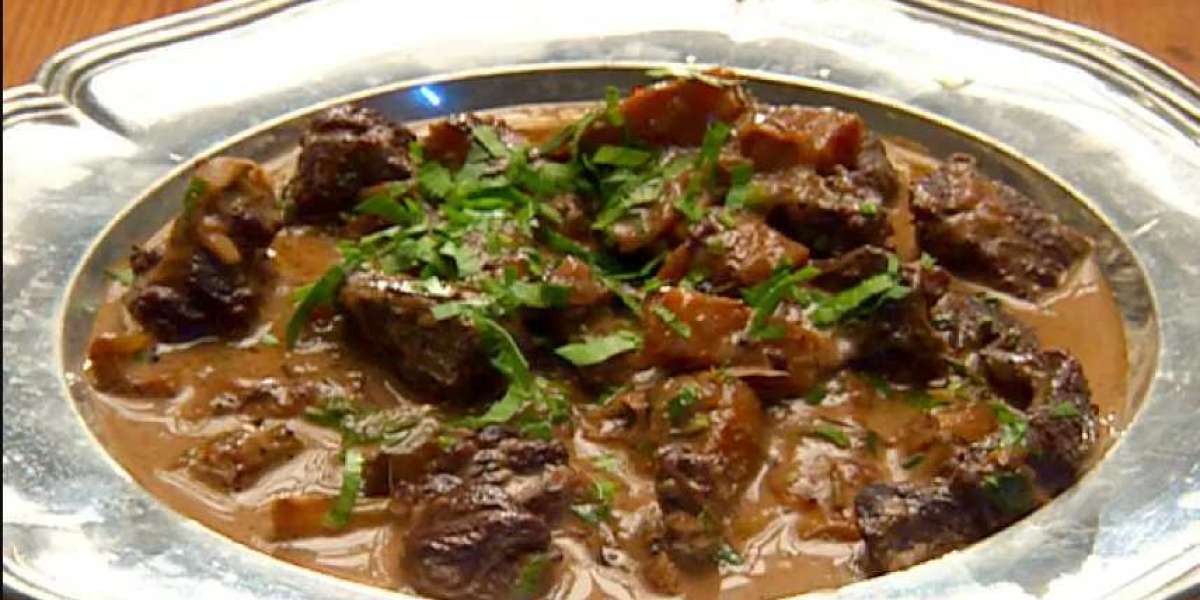Mutton stew is a dish that transcends time, geography, and cultures, resonating with food lovers worldwide for its hearty flavors, wholesome ingredients, and soul-soothing warmth. This iconic dish has found its way into cuisines across the globe, from the rich curries of India to the classic Irish stew, each version carrying its unique identity while staying true to the essence of a slow-cooked, flavor-packed meal.
In this blog, we’ll delve into the origins of mutton stew, its global variations, a detailed recipe, tips for perfecting it, and why this dish remains a beloved staple in kitchens worldwide.
A Brief History of Mutton Stew
The origins of stew can be traced back to ancient times when humans first discovered the art of slow cooking over fire. Stewing allowed tough cuts of meat, like mutton, to be transformed into tender, flavorful dishes. Historically, mutton stew emerged as a practical way to use tougher cuts of goat or lamb, cooked slowly with vegetables and spices to create a filling meal.
Different regions around the world have embraced and adapted mutton stew to their culinary traditions:
- Irish Mutton Stew: A simple dish of mutton, potatoes, carrots, and onions slow-cooked in a rich broth.
- Indian Mutton Stew: A spice-infused stew with mutton, root vegetables, and sometimes coconut milk.
- Middle Eastern Mutton Stew: Often includes chickpeas, tomatoes, and warming spices like cinnamon and cumin.
- African Mutton Stew: Features hearty root vegetables, plantains, and a touch of chili.
These regional variations highlight the universal appeal of mutton stew and its ability to adapt to local flavors and ingredients.
Why Mutton Stew is a Timeless Favorite
- Rich and Nutritious: Packed with protein, vitamins, and minerals, mutton stew is a wholesome meal.
- Comfort Food: Its warm, hearty nature makes it a go-to dish for cold weather or when comfort is needed.
- Versatile: It pairs well with bread, rice, or even as a standalone dish.
- Economical: Utilizes inexpensive cuts of meat and seasonal vegetables, making it budget-friendly.
Ingredients for a Classic Mutton Stew
Before diving into the cooking process, here’s a rundown of the essential ingredients for a traditional mutton stew. These can be adjusted based on regional preferences or dietary needs.
For the Stew Base:
- Mutton (500g): Preferably bone-in for maximum flavor.
- Onions (2 large): Finely chopped.
- Garlic (4-5 cloves): Minced.
- Ginger (1-inch piece): Grated.
- Carrots (2): Sliced.
- Potatoes (2 medium): Cubed.
- Tomatoes (2 large): Chopped or pureed.
- Green chilies (2): Slit lengthwise.
For the Seasoning and Spices:
- Turmeric powder (½ tsp)
- Red chili powder (1 tsp)
- Coriander powder (1 tsp)
- Cumin seeds (1 tsp)
- Bay leaves (2)
- Cinnamon stick (1-inch piece)
- Cardamom pods (2)
- Cloves (2-3)
- Black peppercorns (1 tsp)
- Salt (to taste)
For Garnishing and Flavor:
- Fresh cilantro: Chopped.
- Lemon wedges: Optional, for a zesty kick.
How to Make Mutton Stew
Step 1: Preparing the Mutton
- Wash the mutton pieces thoroughly under running water to remove any impurities.
- Marinate the meat with a pinch of turmeric, salt, and a teaspoon of yogurt (optional) for 30 minutes. This tenderizes the meat and enhances the flavor.
Step 2: Browning the Meat
- Heat 2-3 tablespoons of oil or ghee in a heavy-bottomed pot.
- Add whole spices like bay leaves, cinnamon, cardamom, cloves, and cumin seeds. Sauté until aromatic.
- Add the marinated mutton and sear on high heat until lightly browned. This step locks in the juices.
Step 3: Building the Base
- Add chopped onions and sauté until golden brown. This step is critical for flavor development.
- Stir in minced garlic and grated ginger, cooking until the raw smell disappears.
- Mix in chopped tomatoes and cook until they break down into a thick paste. Add turmeric, red chili powder, coriander powder, and salt at this stage.
Step 4: Adding Vegetables and Liquid
- Add the cubed potatoes and sliced carrots, stirring to coat them with the spices.
- Pour in 3-4 cups of water or stock (bone broth works wonderfully).
Step 5: Slow Cooking
- Reduce the heat to low, cover the pot, and let the stew simmer for 1.5-2 hours. This slow cooking allows the flavors to meld and the mutton to become tender.
- Stir occasionally to ensure nothing sticks to the bottom of the pot.
Step 6: Final Touches
- Taste and adjust the seasoning with salt and black pepper.
- Garnish with freshly chopped cilantro before serving.
Pro Tips for Perfect Mutton Stew
- Choose the Right Cut: Bone-in pieces add depth to the stew. Cuts from the shoulder or leg are ideal.
- Use a Slow Cooker or Pressure Cooker: If short on time, a pressure cooker can reduce cooking time while retaining flavor. A slow cooker is perfect for enhancing tenderness.
- Sear the Meat: Browning the meat before adding liquid creates a caramelized flavor base.
- Layer Flavors: Adding spices in stages prevents them from becoming overpowering.
- Don’t Rush: The key to a flavorful stew is patience. Slow cooking allows the ingredients to fully develop their flavors.
Regional Variations of Mutton Stew
1. Indian Mutton Stew
Infused with spices like turmeric, coriander, and garam masala, the Indian version often includes coconut milk or yogurt for a creamy texture. It’s typically served with naan or steamed rice.
2. Irish Mutton Stew
A classic comfort food made with simple ingredients—mutton, potatoes, carrots, and onions—slow-cooked in broth. It’s often served with crusty bread.
3. Moroccan Mutton Stew
Features an exotic mix of spices like cinnamon, saffron, and cumin, along with apricots or prunes for a sweet-savory flavor. Best paired with couscous.
4. Nigerian Mutton Stew
A spicy tomato-based stew often enjoyed with jollof rice or yams. It’s a staple in West African cuisine.
5. Middle Eastern Mutton Stew
Includes chickpeas, tomatoes, and warming spices like allspice and sumac. Served with flatbreads or rice pilaf.
Why Mutton Stew Stands the Test of Time
- Universal Appeal: From rural kitchens to gourmet restaurants, mutton stew is a dish that resonates across cultures.
- Health Benefits: Mutton is rich in protein, iron, and essential nutrients, making it a healthy choice.
- Adaptability: With endless variations, mutton stew can be tailored to suit different tastes and dietary preferences.
- Soul-Warming Comfort: Whether on a chilly evening or during festive gatherings, mutton stew is the epitome of comfort food.
Serving Suggestions
Mutton stew can be enjoyed in many ways:
- With Bread: Pair with crusty bread, naan, or pita for a hearty meal.
- With Rice: Serve over steamed rice or with a side of biryani for a complete feast.
- As Is: Enjoy a bowl of mutton stew on its own for a light, satisfying meal.
Conclusion
Mutton stew is a dish that brings people together, offering warmth, nourishment, and a sense of home in every bite. Whether you’re making the Indian version with aromatic spices, the Irish classic with simple root vegetables, or experimenting with a fusion recipe, the essence of mutton stew remains the same: a labor of love, crafted with care and enjoyed with gratitude.
So, grab your ingredients, slow cook to perfection, and savor the timeless flavors of mutton stew. Happy cooking!













